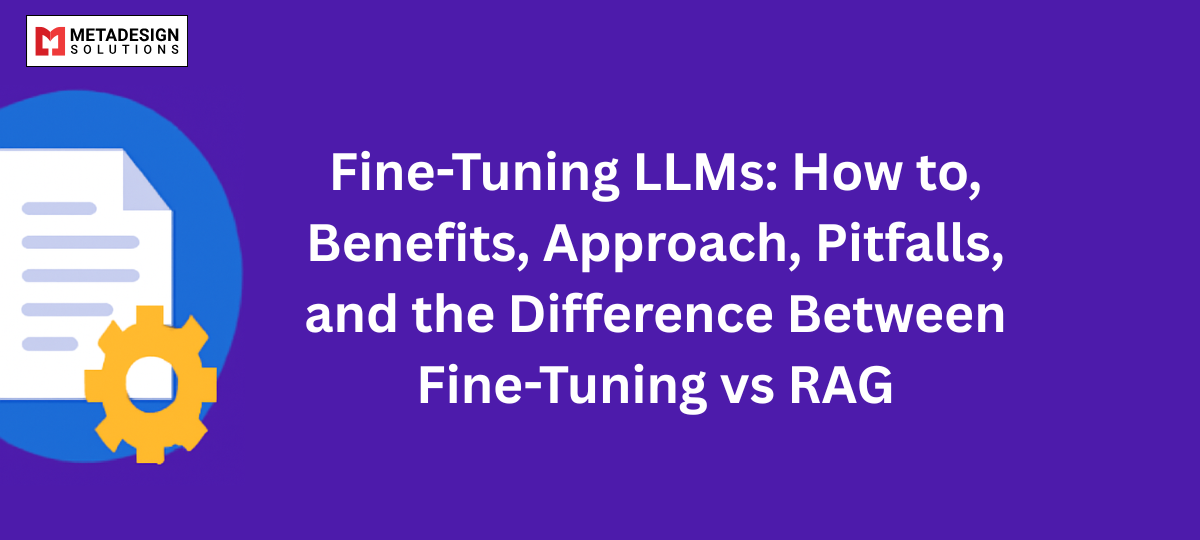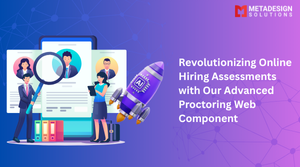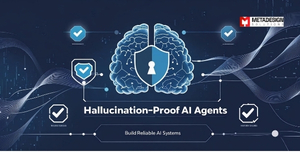What is Fine-Tuning in the Context of LLMs?
Fine-tuning a large language model (LLM) refers to the process of further training a pre-trained model on a smaller, task-specific dataset to adapt it to specific tasks, domains, or applications. LLMs, such as GPT-3, are initially trained on vast amounts of general data to capture knowledge and understand language patterns. However, for certain tasks (e.g., sentiment analysis, question answering, or customer service), the model might require additional training to improve its performance.
The fine-tuning process allows the model to adjust its parameters to better suit the desired output, without having to retrain the model from scratch, which would be computationally expensive and time-consuming. This is where ML development services play a crucial role in optimizing models for specific tasks efficiently.
How Does Fine-Tuning Work?
2.1 Overview of Pre-trained Models
Pre-trained models are models that have already been trained on a large dataset, often covering a wide range of general topics and domains. For example, OpenAI’s GPT-3 has been trained on diverse internet data to understand and generate human-like text. These models are valuable because they have learned useful language patterns that can be transferred to other tasks with minimal adjustments.
Fine-tuning is a way to adapt these pre-trained models to specific tasks or domains. Instead of starting training from scratch, which would require enormous computational resources, fine-tuning leverages the knowledge embedded in the pre-trained model to specialize in particular applications.
2.2 The Fine-Tuning Process
The fine-tuning process typically involves the following steps:
- Dataset Preparation: Collect or create a labeled dataset that is specific to the task you want the model to excel at (e.g., sentiment labels for text).
- Model Selection: Choose a pre-trained model that aligns with the domain. For instance, GPT-based models work well for natural language generation tasks, while BERT-based models are often used for tasks like question answering and text classification.
- Training: Apply your task-specific dataset to the pre-trained model, continuing the training process to adjust the model’s weights and biases. Fine-tuning typically takes less time than training a model from scratch because the pre-trained model already has a foundation of knowledge.
- Evaluation: After fine-tuning, evaluate the model’s performance on a validation dataset to ensure that it has successfully adapted to the new task without overfitting.
Ready to Optimize Your Language Models?
Contact us to implement effective fine-tuning strategies for superior results.
Benefits of Fine-Tuning Large Language Models (LLMs)
3.1 Improved Accuracy and Task-Specific Performance
Fine-tuning allows LLMs to perform better on specialized tasks. For example, a general-purpose LLM might not perform well at answering legal questions or interpreting medical terms. By fine-tuning the model with legal or medical data, it will learn to produce more accurate and relevant results in those areas. This task-specific enhancement provides a huge advantage when using a pre-trained LLM for particular applications, making it highly beneficial for businesses in specialized domains. LLM/GPT Solutions Development Services can help optimize models for specific needs, ensuring they deliver high-performance results.
3.2 Personalized Models
In many industries, there is a need for personalized models that cater to specific user preferences, behaviors, or needs. Fine-tuning allows companies to create models that are tailored to their products or customer base. For instance, customer support chatbots can be fine-tuned with the company’s product data to provide more contextually appropriate responses.
3.3 Better Resource Efficiency
Training a model from scratch requires significant computational resources, including powerful GPUs and large amounts of data. Fine-tuning, on the other hand, requires far fewer resources because the model is already trained on a general dataset and only needs to be adapted to a specific task. This makes fine-tuning a more efficient and scalable approach for many applications.
Approaches to Fine-Tuning LLMs
4.1 Full Fine-Tuning
Full fine-tuning involves adjusting all the parameters of a model based on the task-specific data. This approach is suitable when the task is significantly different from the original dataset the model was trained on. For example, if the model was trained on general text and now needs to handle legal documents, full fine-tuning will allow the model to adapt its internal weights to the nuances of legal language.
4.2 Few-Shot Fine-Tuning
Few-shot fine-tuning is a more resource-efficient approach that leverages the pre-trained model’s general knowledge while requiring fewer labeled examples. This method involves providing a small amount of task-specific data, which the model uses to adjust its parameters slightly. Few-shot fine-tuning is useful when you have limited labeled data but still need the model to adapt to a new domain.
4.3 Transfer Learning and Domain-Specific Fine-Tuning
Transfer learning refers to the technique of applying a pre-trained model’s knowledge to a new, but related, task. For example, a model trained on general text can be transferred to a specific domain, like legal or medical text, by fine-tuning it on domain-specific data. This approach is beneficial when the target task is related to the source task but requires specialized knowledge.
Pitfalls and Challenges in Fine-Tuning LLMs
5.1 Overfitting and Underfitting
One of the primary challenges of fine-tuning is overfitting, where the model becomes too specialized to the training data, losing its ability to generalize to new, unseen examples. Conversely, underfitting occurs when the model does not learn enough from the task-specific data and fails to improve the model’s performance. Both issues need to be carefully managed through proper dataset preparation, validation, and regularization.
5.2 Computational Costs
While fine-tuning is less expensive than training a model from scratch, it still requires considerable computational power, especially for larger models. Fine-tuning on large datasets can be resource-intensive, and running multiple training iterations can quickly increase costs.
5.3 Data and Label Quality
The success of fine-tuning is highly dependent on the quality of the task-specific data. Poor quality data or incorrect labels can degrade the performance of the fine-tuned model. Ensuring that the data is clean, accurately labeled, and representative of the real-world use case is critical for achieving good results.
5.4 Ethical Concerns and Bias Amplification
Fine-tuning can inadvertently amplify existing biases in the pre-trained model. If the fine-tuning data contains biased or unrepresentative samples, these biases may be further ingrained in the model. It’s essential to address ethical concerns by carefully curating data and regularly auditing the output of the fine-tuned model to ensure fairness and transparency.
Fine-Tuning vs Retrieval-Augmented Generation (RAG)
6.1 What is RAG?
Retrieval-Augmented Generation (RAG) is a technique that combines the power of retrieval-based models with generative models. Instead of solely relying on a pre-trained model to generate responses, RAG first retrieves relevant information from a database or corpus and then uses that information to generate a more accurate and contextually relevant response. This approach is particularly useful when working with large datasets or when the model needs to access up-to-date information.
6.2 Key Differences Between Fine-Tuning and RAG
Fine-tuning and Retrieval-Augmented Generation (RAG) are two distinct approaches to enhancing the performance of large language models (LLMs), and understanding their differences is crucial for selecting the appropriate technique based on the task at hand.
- Training Method:
- Fine-Tuning: Involves training a pre-trained model on a task-specific dataset. This adjusts the weights and biases of the model to specialize in the task or domain, making it more accurate for a particular application.
- RAG: Instead of focusing on training the model on a new dataset, RAG integrates retrieval and generation. It first retrieves relevant information from an external knowledge source (such as a database or document corpus) and uses this information to generate responses. The retrieval process allows the model to access a much larger pool of information than it would if it were only generating based on its internal knowledge.
- Task Suitability:
- Fine-Tuning: Best suited for tasks where the model needs to deeply understand a specific domain or task, such as sentiment analysis, text classification, or medical document interpretation. Fine-tuned models are specialized for particular tasks and operate independently of external data sources.
- RAG: Ideal for situations where the model needs to access real-time or up-to-date information. It’s useful for tasks like question answering or summarization, where knowledge from external resources (such as a knowledge base) is necessary to provide an accurate response.
- Flexibility:
- Fine-Tuning: The model becomes fixed after fine-tuning, meaning it is limited to the knowledge it was trained on. If there are changes in the domain or additional knowledge is required, it requires retraining or further fine-tuning with updated data.
- RAG: Highly flexible since it can retrieve and use any up-to-date information without needing to retrain or fine-tune the model. This makes it adaptable to fast-changing domains or applications where the model needs to pull in new data regularly.
- Resource Requirements:
- Fine-Tuning: Requires significant computational resources, especially for large models. The process of fine-tuning can be time-consuming and resource-intensive, particularly when working with large datasets or complex tasks.
- RAG: While RAG models still require a pre-trained model for generation, the retrieval process introduces additional complexity, such as maintaining a knowledge base and ensuring efficient retrieval. The computational cost may be high due to the need for fast and accurate retrieval mechanisms, but it avoids the need for continual retraining of the model.
6.3 When to Use Fine-Tuning vs RAG?
The decision to use fine-tuning or RAG depends on the nature of the task, the available resources, and the required level of flexibility.
- Use Fine-Tuning:
- When you have a large, high-quality dataset specific to your task or domain.
- If the task requires deep understanding and modeling of a particular subject.
- When computational resources and time are available to fine-tune the model adequately.
- If the model is expected to operate without needing real-time access to external data sources.
- Use RAG:
- When the task requires real-time or up-to-date information that is not contained in the pre-trained model.
- For scenarios where the model needs to access a vast amount of external knowledge (e.g., documents, databases, etc.) to generate accurate results.
- If you need a flexible system that can be easily adapted to new domains by updating the retrieval corpus rather than retraining the model.
Conclusion
Fine-tuning large language models (LLMs) is an essential process for adapting pre-trained models to specific tasks, improving accuracy, and generating more relevant outputs. By leveraging the knowledge embedded in pre-trained models, fine-tuning allows businesses and researchers to create customized solutions without the need for training models from scratch. However, it is not without its challenges, including the risks of overfitting, the need for high-quality data, and the computational costs involved.
On the other hand, Retrieval-Augmented Generation (RAG) represents a different approach, where external knowledge is retrieved and used to supplement the generative capabilities of the model. RAG is particularly beneficial for tasks that require real-time information or access to large external knowledge sources, offering more flexibility and adaptability compared to fine-tuning.
Ultimately, the choice between fine-tuning and RAG depends on the specific use case, available resources, and the task requirements. Fine-tuning is ideal for tasks that need deep model specialization, whereas RAG is perfect for applications that require up-to-date information and external knowledge.
Understanding both techniques enables practitioners to make informed decisions and select the best approach for their machine learning and natural language processing tasks, ensuring optimal performance and efficiency.
Related Keyphrase:
#FineTuningLLMs #MachineLearning #LLM #AI #ArtificialIntelligence #DataScience #MLModels #FineTuning #RAG #RetrievalAugmentedGeneration #AIModels #MLApproach #AIDevelopment #TechInnovation #DeepLearning #AIdevelopmentservices #AIservices #TechCompany #TechSolutions #HireAIExperts #HireMLDevelopers #AIconsulting #MLconsulting #SoftwareDevelopmentServices



